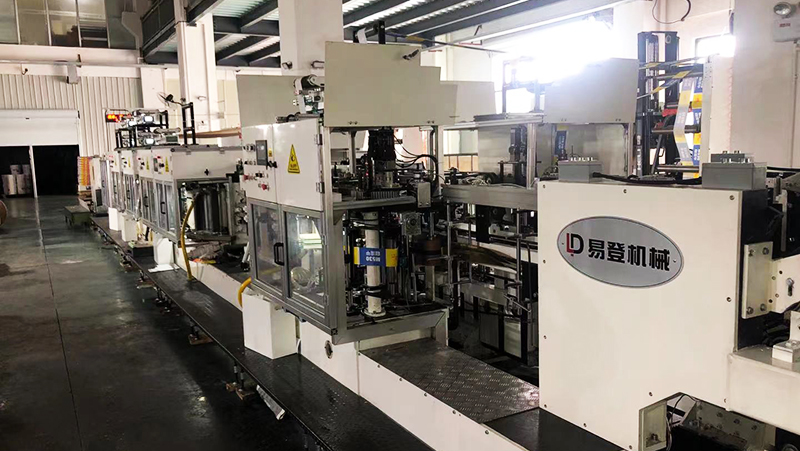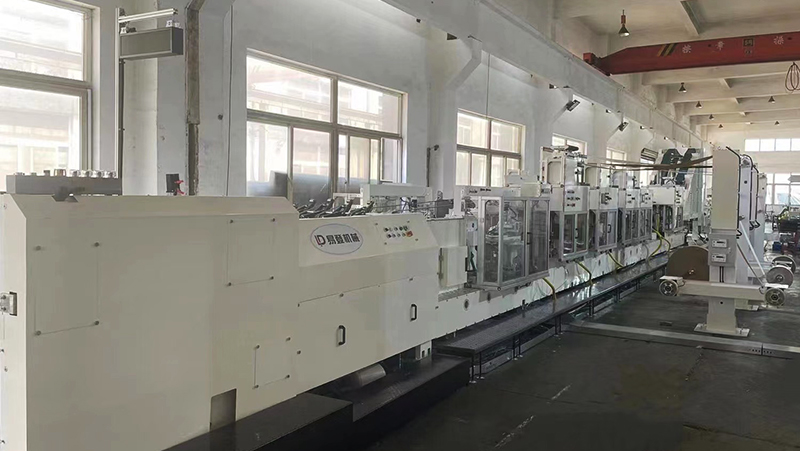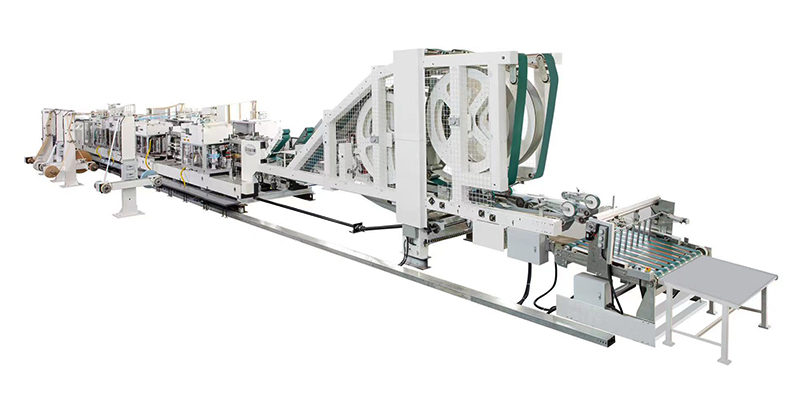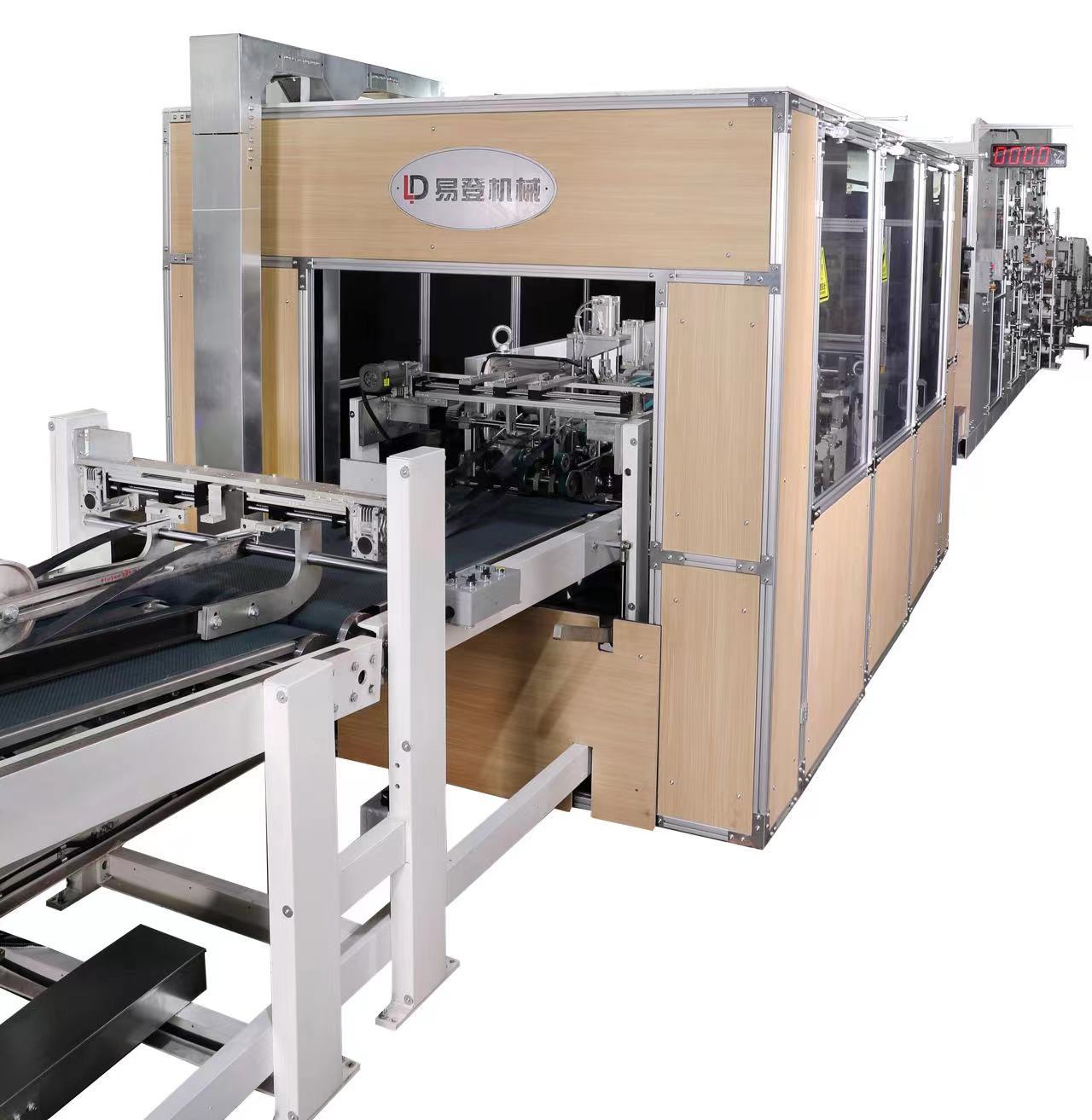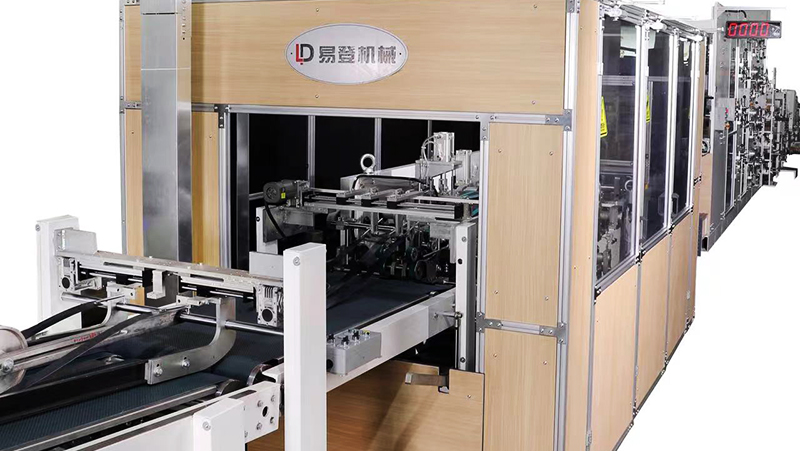In the modern packaging industry, cement paper bags remain a critical solution for storing and transporting bulk materials like cement, powdered chemicals, and minerals. The production of these durable, eco-friendly bags relies heavily on specialized machinery known as cement paper bag making machines. These automated systems are designed to streamline the manufacturing process, ensuring high efficiency, precision, and consistency. This article explores the functionality, components, and advantages of these machines in industrial applications.
1. Overview of Cement Paper Bag Making Machines
A cement paper bag making machine is an integrated production line that transforms raw materials—primarily kraft paper—into multi-layered, valve-style cement bags. These machines are engineered to handle high-speed operations while maintaining strict quality standards. The final product is characterized by its strength, leak-resistant design, and suitability for automated filling systems used in cement plants.
2. Key Components and Workflow
The machine typically consists of several interconnected modules, each performing a specific task:
- Paper Unwinding System: Rolls of kraft paper (often 2-4 layers for added durability) are fed into the machine. Some systems include automatic splicing to ensure continuous production.
- Printing Unit: Flexographic or rotary printers apply branding, product information, or safety labels onto the paper.
- Gluing and Lamination: Adhesive is applied to bond multiple paper layers and form the bag’s valve structure. Hot-melt or water-based glue is used for eco-friendliness.
- Forming and Cutting: The paper is folded into a tubular shape, sealed at the bottom, and cut to predefined lengths. Rotary cutting systems ensure precision.
- Valve Attachment: A critical step for cement bags, where a paper or plastic valve is inserted to enable controlled filling and prevent dust leakage.
- Stacking and Packaging: Finished bags are counted, stacked, and bundled for shipment.
Advanced machines incorporate PLC (Programmable Logic Controller) systems and sensors to monitor tension, alignment, and glue application in real time.
3. Advantages of Automated Cement Bag Machines
- High Speed: Modern machines produce 80–120 bags per minute, significantly boosting output.
- Customization: Adjustable settings accommodate various sizes (e.g., 25kg, 50kg) and paper grades.
- Reduced Labor Costs: Automation minimizes manual intervention, lowering operational expenses.
- Consistency: Precision engineering ensures uniform bag dimensions and valve placement.
- Sustainability: Kraft paper is recyclable and biodegradable, aligning with green packaging trends.
4. Applications Beyond Cement
While designed for cement packaging, these machines are versatile enough to produce bags for:
- Construction materials (gypsum, sand)
- Agricultural products (fertilizers, animal feed)
- Industrial powders (chemicals, pigments)
5. Choosing the Right Machine
Factors to consider include production capacity, automation level, energy efficiency, and after-sales support. Reputable manufacturers like Haver & Boecker, Premier Tech, and Paglierani offer modular designs tailored to different scales of operation.
Conclusion
Cement paper bag making machines are indispensable in meeting the global demand for reliable, sustainable bulk packaging. By integrating advanced automation and robust engineering, these systems not only enhance productivity but also contribute to reducing environmental impact. As industries increasingly prioritize eco-conscious practices, investing in high-quality bag-making machinery will remain a strategic move for manufacturers worldwide.
This technology underscores the intersection of industrial efficiency and environmental responsibility, paving the way for smarter, greener packaging solutions.


